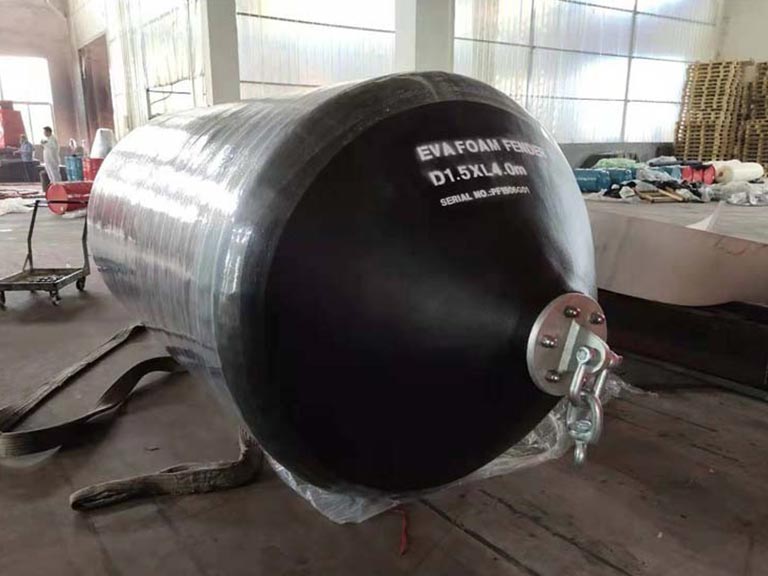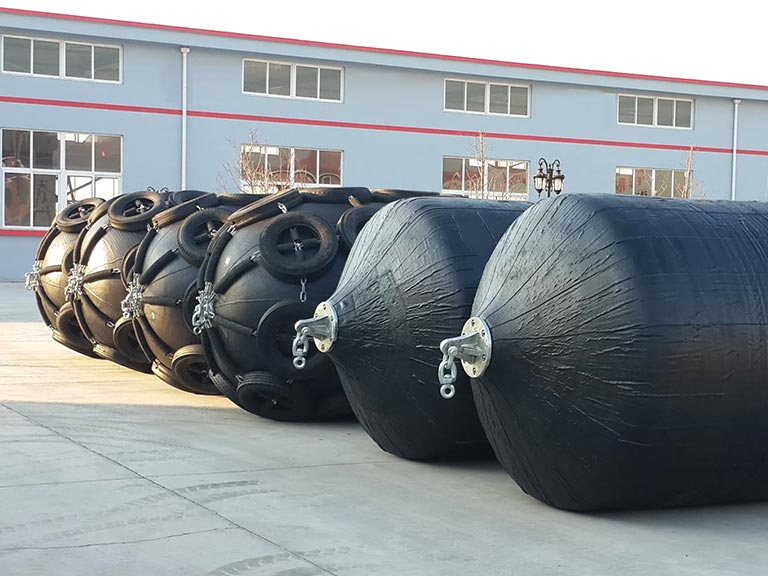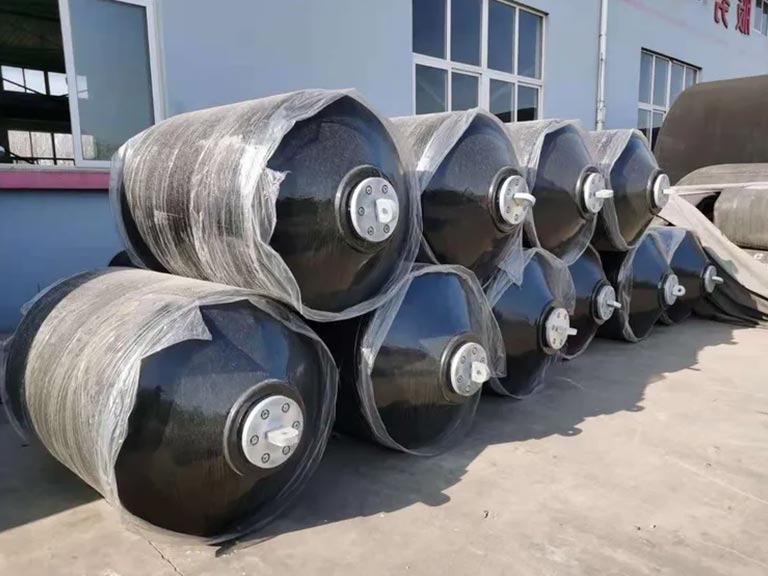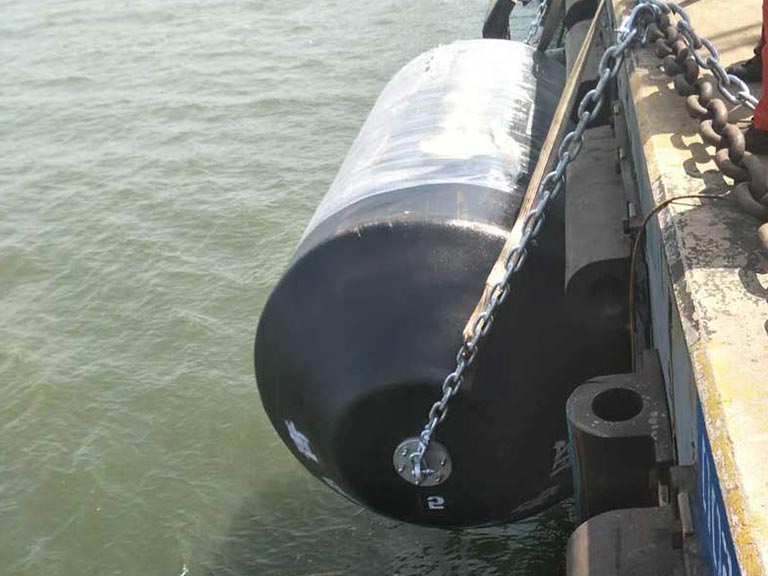Are you aware of the critical role that foam fender covers play in protecting your vessel during docking and mooring operations? Foam fender coverings are generally 1/2 inch or 4 inch thick. Some may be thicker, reaching over 4 inches. The actual thickness varies according to the manufacturer and the intended purpose.
At Henger Shipping Supplies, a leading Chinese marine equipment manufacturer. We grasp the significance of picking the right thickness for these protective accessories. We specialize in producing Yokohama fenders, marine rubber fenders, and other marine products.
In this detailed guide, we’ll delve into the standard thickness measurements, various product offerings, and key factors to consider. We aim to help you make an informed decision when choosing the right foam fender covers for your needs.
Table of Contents
What Are Foam Fender Covers?
Foam fender covers add an extra layer of protection, reducing potential damage during docking maneuvers. These protective sleeves fit over standard marine fenders, enhancing their functionality.
Foam fender covers are protective sleeves crafted from durable, marine-grade foam materials. They offer superior cushioning and scratch resistance compared to bare fenders. This ensures the longevity of both the fender and the vessel or dock it comes into contact with.
Common Applications in Marine Settings
In marine settings, foam fender covers are used across various applications. This includes recreational boats, yachts, commercial vessels, and marina docking stations. The foam material is engineered to withstand harsh marine environments. This includes saltwater, UV radiation, and varying weather conditions.
- Foam fender covers prevent marking or scratching of a vessel’s hull while absorbing impact energy during docking.
- Quality foam covers extend the life of the underlying fenders, providing enhanced protection that bare fenders cannot offer alone.
By incorporating foam fender covers into their docking procedures, marine professionals can significantly reduce the risk of damage to their vessels and infrastructure.

The Importance of Foam Fender Cover Thickness
Understanding the importance of foam fender cover thickness is vital for optimal vessel protection. The thickness directly influences the protective capabilities and durability of the fender.
- Protection Capabilities Based on Thickness: The thickness of a foam fender cover is crucial in determining its ability to absorb impact and prevent damage. Thicker covers generally offer superior protection, especially for larger vessels or those operating in rough conditions.
- Durability Factors: Durability is also significantly affected by the thickness of the foam fender cover. Thicker covers tend to be more resistant to compression and wear, thereby extending their service life. However, environmental factors such as temperature extremes and UV exposure can impact performance over time.
Standard Thickness Measurements of Foam Fender Covers
When it comes to foam fender covers, thickness is a key consideration for durability and protection. Industry standard foam fender cover thicknesses typically range from 1/8 inch to 1/4 inches.
Most manufacturers categorize their foam fender covers into light-duty, medium-duty, and heavy-duty thickness ranges. Here is a more complete analysis:
- Common Thickness: Many fender coverings, particularly those meant for automotive usage, are comprised of 1/8-inch thick foam.
- Options with More Depth: Some coverings, particularly those meant for higher duty use or to protect against more substantial impacts, may contain 1/4 inch thick foam.
- Thinner Options: While less prevalent, some fender coverings may employ thinner foam, such as 1/16 inch. Which may not provide the same amount of protection.
- Material Variation: The substance of the foam can also influence its apparent thickness and durability. For example, some coverings are made of PVC foam with nylon mesh reinforcement for extra strength.

Non-Scratch Foam Fender Covers Thick Enough for Protection
For marine professionals, non-scratch foam fender covers are a must-have. They offer superior protection for your vessel’s fenders while being easy to use.
Cling Tight Backing Technology: The “cling tight” backing technology keeps the fender cover securely in place, even in challenging marine conditions. This is vital for keeping your vessel’s fenders intact.
Acid and Grease Protection Features: Non-scratch foam fender covers have specialized chemical resistance. They protect against acid, grease, and other damaging substances found in marine environments.
Choosing the Right Thickness for Your Needs
Choosing the right foam fender cover thickness is crucial. It depends on several factors, including vessel size and environmental conditions.
- Vessel Size Considerations: The size of your vessel is key in selecting the right thickness. Smaller boats under 25 feet usually need covers with 1/2 to 1 inch thickness. Larger vessels require thicker options, often 2 inches or more.
- Environmental Factors: Environmental conditions also play a significant role. Harsher environments, like rough waters and strong currents, need thicker, more durable covers for protection.
- Usage Frequency and Intensity: How often and intensely you use your vessel affects the choice of thickness. Recreational boaters might find thinner covers sufficient. Commercial operations or frequent users should opt for thicker, more durable options.
Other factors include docking conditions, vessel weight, storage implications, and budget. For example, concrete docks or rough surfaces require thicker covers than smooth wooden docks or marina slips with existing protection.
| Vessel Size | Recommended Thickness | Typical Usage |
| Under 25 feet | 1/2 to 1 inch | Recreational boating |
| 25-50 feet | 1 to 2 inches | Frequent recreational or occasional commercial |
| Over 50 feet | 2+ inches | Commercial or heavy usage |

Conclusion
This decision is crucial for your vessel’s protection. The thickness varies, from 1/2 inch to 4+ inches, with most recreational uses between 1-3 inches. Consider your vessel size, docking conditions, and usage frequency when selecting.
Manufacturers like Henger Shipping Supplies offer specialized options. Thickness is just one aspect, material quality, construction, and installation are also important. Investing in quality foam fender covers is a wise decision for protecting your vessel.
FAQ
How do I choose the right thickness for my foam fender cover?
The right thickness depends on several factors. Consider your vessel size, environmental conditions, and usage frequency. This ensures you get the best protection.
Are your foam fender covers compatible with different fender types?
Yes, our foam fender covers are designed to fit various fender types, including Yokohama fenders. They provide a secure and protective fit.
What are the benefits of using non-scratch foam fender covers?
Our non-scratch foam fender covers feature “Cling Tight” backing technology. This technology provides a secure fit while protecting your vessel from scratches and damage.
How do I ensure my foam fender cover is durable and long-lasting?
Our foam fender covers are made with marine-grade materials. They are designed to withstand harsh marine environments, ensuring durability and longevity.
Can I use foam fender covers in extreme weather conditions?
Yes, our foam fender covers are designed to provide protection in various environmental conditions. This includes extreme weather.
Are your foam fender covers resistant to acid and grease?
Yes, our foam fender covers feature acid and grease protection features. They are suitable for use in harsh marine environments.




